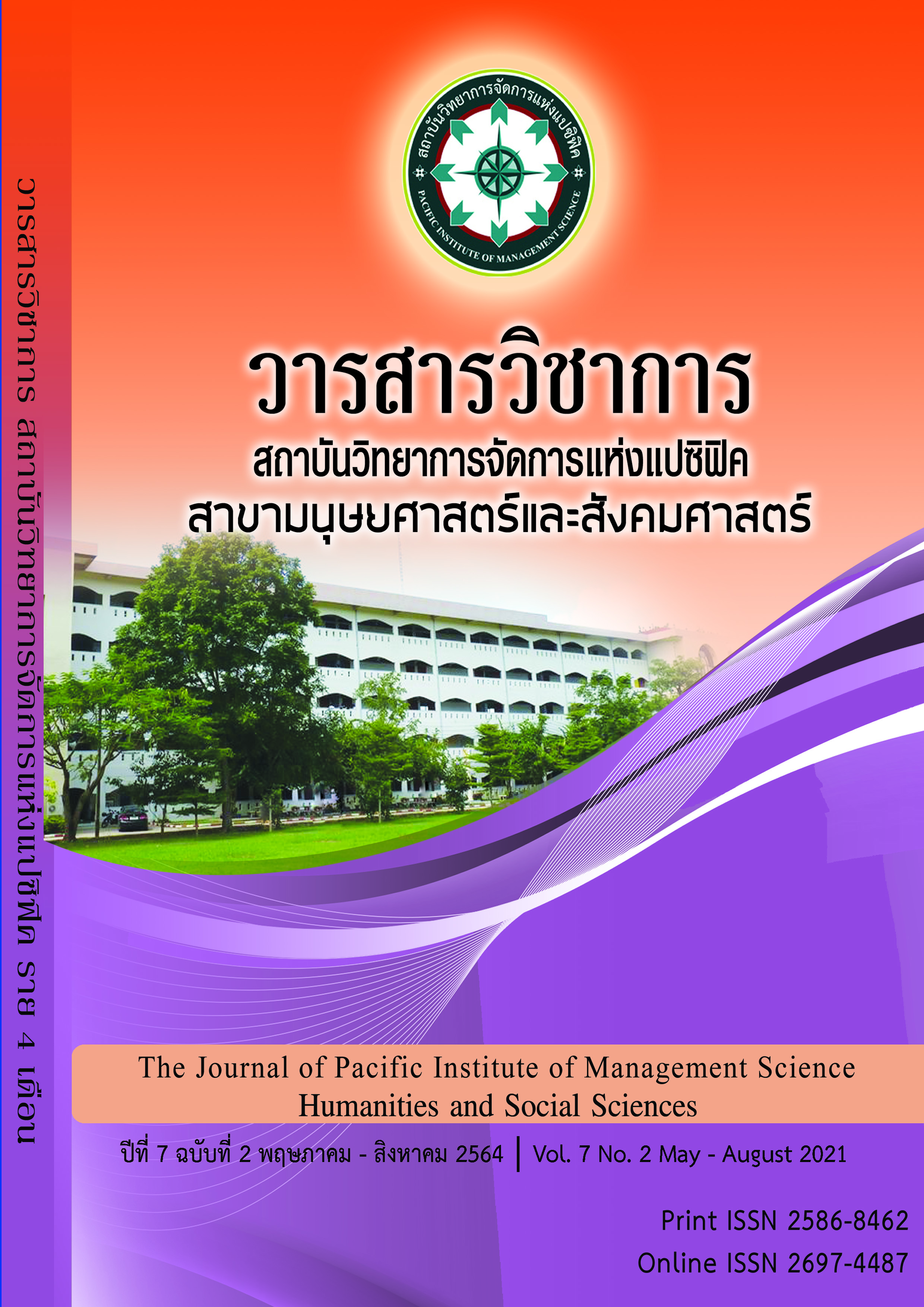Marketing Strategy Model for International Expansion: A Case of Thai SMEs
Keywords:
Business management process, Marketing strategic model, Small and medium enterprises, Business ExpansionAbstract
The objectives of this research were 1). to study marketing strategy model for SMEs business expansion to foreign countries 2). to study factors influencing marketing strategy model for SMEs business expansion to foreign countries and 3). to create marketing strategy model for SMEs business expansion to foreign countries. Survey questionnaire was used to collect data from 400 Thai SME entrepreneurs who employed not more than 200 employees. The research employed descriptive statistics, One-way ANOVA, and multiple regression to analyze data and to test hypothesis.
The results from this research found that management process including length of time in production process had highest impact on business expansion to foreign countries, for marketing strategy aspect, the results found that by making products or services different from competitors in the world market had highest impact on business expansion to foreign countries, for external environment factors, the results found that official language of business partner country had highest impact on business expansion to foreign countries. For entrepreneur characteristics, the results found that entrepreneur’s knowledge and skills of financial management had highest impact on business expansion to foreign countries. Finally, the hypothesis test results found that the SME’s characteristics, marketing strategy, business management process, external environment factors, and entrepreneur’s characteristics had influences on the success of Thai SMEs in order to expand business to the foreign countries at statically significant level 0.05
References
Falk, M., Gavin, M., Siedschlag, I., Hagsten, E., Vessel, J., & Mirza, D. (2014). Drivers of sme Internationalisation: Implications for Firm Growth and Competitiveness: Background Study for Chapter 3, European Competitiveness Report 2014: Helping Firms Grow 2014.’swd (2014) 277 final. European Commission, Brussels.
Hirano, H. (1996). 5S for operators: 5 pillars of the visual workplace. Productivity press.
Ibrahim, M. I., & Mustapha, B. (2019). Determinants of Small and Medium Enterprises Performance in Nigeria: The Role of Government Support Policy. International Journal of Business and Economics Research, 8(2), 41.
Kunday, Ö., & Şengüler, E. P. (2015). A study on factors affecting the internationalization process of small and medium enterprises (SMEs). Procedia-Social and Behavioral Sciences, 195, 972-981.
Kunkongkaphan, P. (2014). Impact of Globalisation on Thai Small and Medium Enterprises: A Study of the Clothing and Textile Industry (Doctoral dissertation, Victoria University). Retrieved from: http://vuir.vu.edu.au/25357/1/Pakinee%20Kunkongkaphan.pdf
O'Cass, A., & Weerawardena, J. (2009). Examining the role of international entrepreneurship, innovation and international market performance in SME internationalisation. European Journal of Marketing, 43(11/12), 1325-1348.
OECD (2006), “Removing barriers to SME access to international markets”, Final background report of the OECD-APEC joint project, 6-8 November, Athens, Greece.
Office of Small and Medium Enterprises Promotion (2017). SME Promotion Plan No. 4 (B.E. 2560 - 2021). Office of Small and Medium Enterprises Promotion.
Rahman, M., Uddin, M., & Lodorfos, G. (2017). Barriers to enter into foreign markets: Evidence from SMEs in emerging market. International Marketing Review, 34(1), 68-86.
Rakariyatham, A., & Ploysri, S. (2016). A Development of a Causal Model towards the Success in International Business Engagement of Small and Medium-sized Enterprises in Upper Northern Thailand. Journal of Accounting and Management Mahasarakham University, 8(2): 12-21.
Rashid, A., & Waqar, S. M. (2017). Exchange rate fluctuations, firm size, and export behavior: An empirical investigation. Small Business Economics, 49(3), 609-625.
SMEs Center University of the Thai Chamber of Commerce (2018, July 31). Smart SMEs driving the power of Thailand 4.0. Retrieved from THAI SMART CENTER: https://tsc.thaichamber.org/th/news/view/46
Thai-Japanese Technology Promotion Association. (August 2013). SMEs under the ASEAN Economic Community. Know the AEC, 37-37. Retrieved from: http://www.tpa.or.th/tpanews/upload/mag_content/71/ContentFile1422.pdf
The Organisation for Economic Co-operation and Development. (2017). ENHANCING THE CONTRIBUTIONS OF SMEs IN A GLOBAL AND DIGITALISED ECONOMY. Paris: OECD.
The Revenue Department (22 October 2019). The Revenue Department. Retrieved from Export enterprises: https://www.rd.go.th/publish/fileadmin/user_upload/morkor/testaaa/pdf62/T_490_2562.pdf
Tooksoon, P., Mongkhonkili, N., & Imaob, M. (2016). The Effects of Marketing Capabilities and Business Networks to Export Success of Thai’s Entrepreneurs Sustaining for ASEAN Economic Community (AEC). Veridian E-Journal, Silpakorn University (Humanities, Social Sciences and arts), 9(1), 439-455.
Vrontis, D., Thrassou, A., & Lamprianou, I. (2009). International marketing adaptation versus standardisation of multinational companies. International Marketing Review.
Xie, Y. (2019). Essays on Exchange Rates and International Trade: Firms, Products, and Value-added Trade (Doctoral dissertation, Waseda University Tokyo, Japan).
Yam, R., Lo, W., Tang, E.P. and Lau, A.K. (2011), “Analysis of sources of innovation, technological innovation capabilities, and performance: An empirical study of Hong Kong manufacturing industries”, Research Policy, Vol. 40, No. 3, pp. 391-402.
Downloads
Published
Issue
Section
License
Copyright (c) 2021 Pacific Institute of Management Science

This work is licensed under a Creative Commons Attribution-NonCommercial-NoDerivatives 4.0 International License.
บทความที่ได้รับการตีพิมพ์เป็นลิขสิทธิ์ของ สถาบันวิทยาการจัดการแห่งแปซิฟิค
ข้อความที่ปรากฏในบทความแต่ละเรื่องในวารสารวิชาการเล่มนี้เป็นความคิดเห็นส่วนตัวของผู้เขียนแต่ละท่านไม่เกี่ยวข้องกับสถาบันวิทยาการจัดการแห่งแปซิฟิค และคณาจารย์ท่านอื่นๆในสถาบันฯ แต่อย่างใด ความรับผิดชอบองค์ประกอบทั้งหมดของบทความแต่ละเรื่องเป็นของผู้เขียนแต่ละท่าน หากมีความผิดพลาดใดๆ ผู้เขียนแต่ละท่านจะรับผิดชอบบทความของตนเองแต่ผู้เดียว







